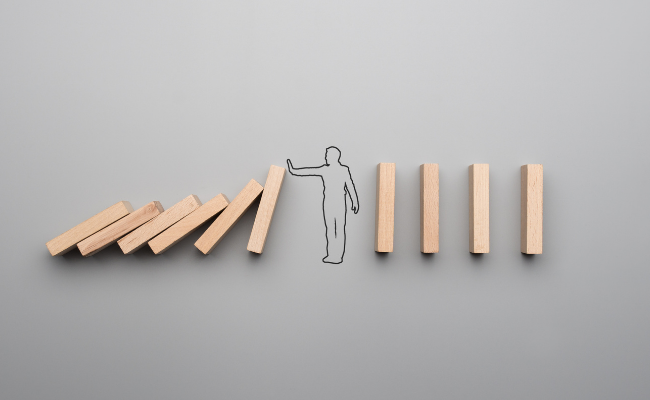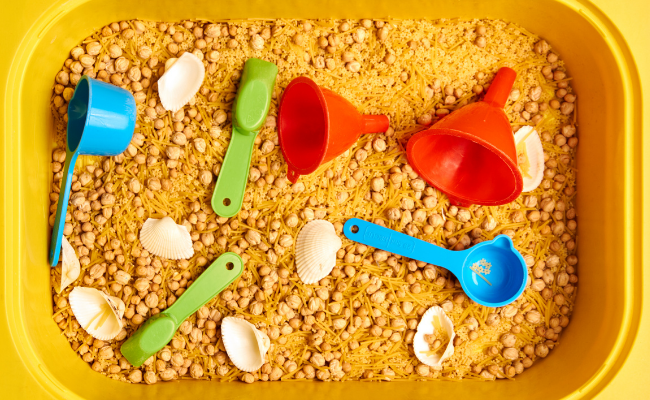The P.I.E. Method
“Insights are not enough to sustain lasting change.”
– Ana Melikian
Many people live moment to moment in a reactive state, leading to burnout and demotivation. Reactivity breeds stress. Today, we’re looking at a different way to move through the day by turning reactivity into creativity.
We discuss:
- The value of creating space between stimulus and response
- Understanding the triangle of thoughts, feelings, and actions
- How to recognize that all outcomes are valuable learning experiences
The value of creating space between stimulus and response

If we spell “REACTIVE” and move the “C” to the front of the word, what do we get? CREATIVE. With a slight shift, the entire meaning changes. And, with it, the outcome. Small, simple changes can create meaningful transformations.
One of the key ways to amplify impact without burning out is to learn how to stop being reactive and stay in creative mode. The crucial step to that is learning how to pause.
The “P” in The PIE Method stands for Pause.
When we react, we risk falling into familiar habits and repeating patterns that no longer serve us. When we pause between stimulus and response, we take back our power to choose a different action that supports our growth and health.
Pausing allows us to be more proactive and respond effectively. We can train and strengthen the capacity of pressing the pause button as we would a muscle. Pauses can be very powerful. And if we want to be effective at pressing the pause button when we need it most—in that microsecond after something triggers us— we have to start by training our mental muscles. Like going to the gym, only for our mind.
Training our minds to press pause when we need it most (micro-pauses) can be as simple as daily scheduled pauses or as in-depth as macro pauses.
Scheduled pauses
Schedule pauses refer to creating moments in our daily routine to do breathing exercises or reflect on something that was a trigger throughout the day. This practice can also work as journaling and gratitude exercises. Anything that allows us to stop and reflect on a regular basis.
Macro pauses
Macro pauses refer to reading a book, working with a coach, going to a retreat, etc. These create significant time and space for learning and becoming more self-aware. By pairing scheduled and macro pauses, we strengthen our mental muscles in the art of the pause, and we are ready to hit that pause, in that microsecond, so that we can choose our response, even when circumstances are tough.
Understanding the triangle of thoughts, feelings, and actions

Thoughts, feelings, and behaviors/actions are not a straight line of understanding. These three elements do not typically work linearly. That would be pretty neat if they did, and a whole lot less complex, but we must recognize that is not the case.
The “I” in PIE stands for Increasing Self-Awareness.
Insights are not enough to sustain lasting change. Would it be great if an inspiring TED talk was enough to change us? Yes. Seeing an inspirational speech or reading an amazing book can ignite the spark that leads to change—but there are more moving parts involved in creating lasting change.
Mindsets are not the be-all-end-all. Yes, changing our beliefs and the way we see the world makes a huge difference. But we need to do more. Many times, it's what we do that determines the way we think and feel.
For example, if we’re coming up against a problem, banging our head against a wall, and not making any progress, the best thing to do is take a walk, a shower, or anything that helps us relax and reframe the issue. Being more in tune with nature and our bodies helps open our minds to new ideas and possibilities.
Instead of seeing thoughts, feelings, and behaviors linearly, try to see them as a triangle, a form with three sides. If a triangle loses one of its sides, it ceases to exist. If we form a triangle with our hands, we can see how we need all three dimensions. And if we become aware of how they interplay with each other, we can expand our possibilities. This triangle allows us to increase our self-awareness.
How to recognize that all outcomes are valuable learning experiences

Failed job interviews, successful projects, breakups, marriage—each one is a learning experience, whether or not it feels positive or negative at the moment. I know, I know, no one likes to fail. But when we fail, we can fail forward. And when we succeed, we build on that success. It’s no secret that we learn more from failing than we do from succeeding.
The “E” in PIE stands for Embracing Experimentation.
When one is experimenting, all outcomes are welcome. All is information that allows us to learn, and if we don’t get an expected result, that can be very enlightening.
Keep in mind that, when the rubber meets the road, it's easier to go back to old patterns of doing, feeling, and thinking. The illusion that change is a linear process and that relapsing into old patterns is a failure are some of the dynamics preventing real positive change from becoming our new normal.
For instance, if one decides to experiment with creating a scheduled pause to start their work day—maybe they even have a bookmark on their web browser—a breathing exercise to practice when they sit in front of their computer. That’s wonderful!
They do it. And they become aware of how that makes them feel. The next day, they forget to do the scheduled pause. Should they beat themselves up over that? No. They should be gentle with themselves, not allow their inner critic to take over, and try again tomorrow, maybe even experiment with doing that pause at a different time.
Embrace the messiness that change almost always brings.
What is easiest for you to recognize in yourself—thoughts, feelings, or actions? What is one thing you can focus on to experiment with increasing self-awareness?
Be sure to check out the full episode for further insight into the PIE Method!








